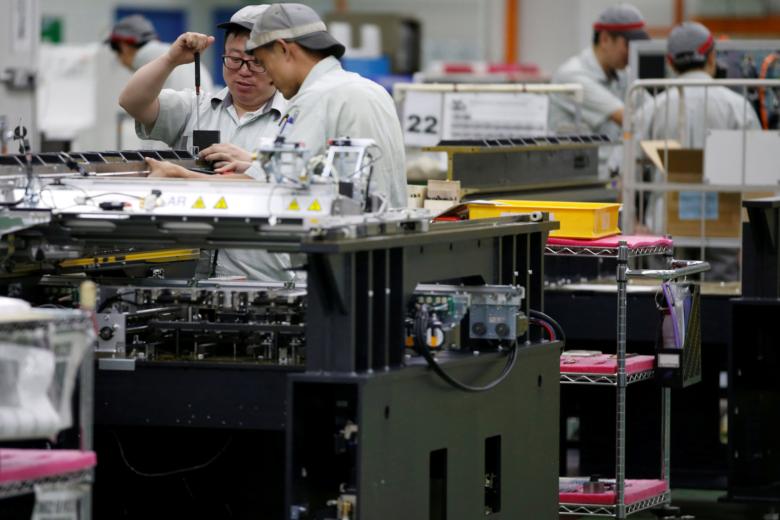Singapore factory output up 8.9% in February, better than expected
Sign up now: Get ST's newsletters delivered to your inbox

Electronics was once again the star performer, expanding 17.4 per cent last month compared to a year ago.
PHOTO: ST FILE
Vivien Shiao
Follow topic:
SINGAPORE - Singapore's factory output continued its winning streak in February, beating expectations from economists despite concerns about the Chinese New Year (CNY) effect.
The Economic Development Board on Monday (March 26) reported that industrial production grew 8.9 per cent in February compared to a year ago, faster than the 4.2 per cent expected by economists in a Bloomberg poll. Excluding biomedical manufacturing, output grew 9.1 per cent.
February's factory output growth of 8.9 per cent still lags behind January's stellar expansion of 16.9 per cent, revised down from earlier 17.9 per cent.
On a seasonally adjusted basis, however, manufacturing output dipped 0.5 per cent in February from January. With biomedical manufacturing stripped out, output still managed to grow 1.3 per cent from January.
Electronics was once again the star performer, expanding 17.4 per cent last month compared to a year ago. This was attributed mainly to the booming semiconductors segment, which posted a robust growth of 26.7 per cent.
The volatile biomedical manufacturing cluster expanded 8.4 per cent, on the back of higher output from the pharmaceuticals segment due to higher production in biological products.
Chemicals output increased 8 per cent, led mainly by petrochemicals, which grew 17 per cent on the back of increased production capacity.
Transport engineering went up 5.4 per cent year on year, attributed mostly to the aerospace segment, which grew a whopping 57.2 per cent as a result of higher volume of repair and maintenance work from commercial airlines.
Precision engineering - which is closely linked to electronics - grew at a sedate pace of 3.4 per cent. While the machinery and systems segment grew 6.6 per cent, other segments such as precision modules and components segment declined due in part to the CNY holiday.
General manufacturing fared the worst, with output declining by 6.3 per cent year on year. This, again, was due to fewer production days in February as a result of CNY.
The festival took place in February this year and January 2017, which muddied up data.
Despite talk of an impending trade war, economists do not see a negative impact on Singapore for now."The ongoing US-China trade spat has not impacted Singapore's manufacturing growth as yet," said Maybank economists Chua Hak Bin and Lee Ju Ye.
DBS economist Irvin Seah went a step further, suggesting that Singapore could potentially benefit if there is some degree of trade diversion.
He said that if US importers find it too expensive to source from China, they could switch their procurement sources to economies such as Taiwan, South Korea, Vietnam, Thailand and Malaysia.
"And countries such as Singapore, with existing trade agreements with the US whereby the trade terms are more favourable, could see more advantages," he said.
The relatively firm manufacturing data have led to calls by economists that the Monetary Authority of Singapore will start on a policy normalisation path in their upcoming meeting in April 2018.
Maybank Kim Eng and UOB are among those which expect the central bank to guide a mild appreciation of the SGD NEER slope.

